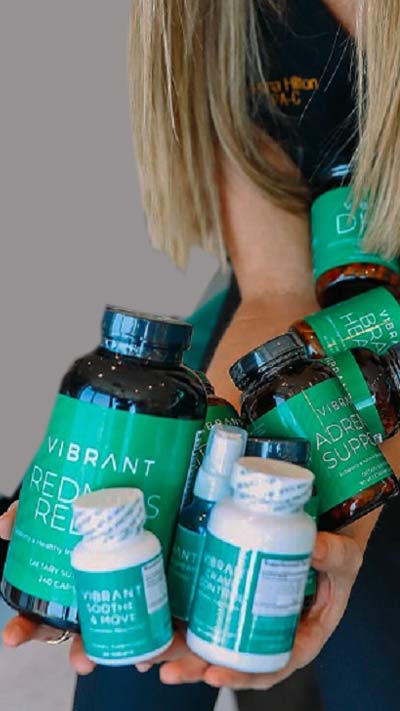The human microbiome is a diverse world of bacteria, viruses, yeasts, protozoans, and other microscopic organisms living in our body. Research has highlighted the significant roles of prebiotics, probiotics, and postbiotics in shaping this microbiome and enhancing our overall health.
This article clarifies these terms, their differences, and their potential health benefits.

What Are Prebiotics?
Prebiotics are non-digestible fibers found in certain foods and supplements that serve as food for beneficial gut bacteria (probiotics). By nourishing these bacteria, prebiotics support digestive health and bolster the immune system.
Types of Prebiotics:
Many prebiotic types exist. Some of the most common include:
- Psyllium husk (soluble fiber).
- Inulin, found in chicory root, garlic, and onions.
- Fructo-oligosaccharides (FOS), present in bananas and asparagus.
- Galacto-oligosaccharides (GOS), found in legumes and human milk.
- Resistant starch, found in cooked and cooled potatoes, green bananas, and legumes.
- Beta-glucans, present in oats and barley.
What Are Probiotics?
Probiotics are live microorganisms that we acquire through food, dietary supplements, and topical products. They increase the number of beneficial bacteria in our body and lower the number of harmful bacteria to maintain a healthy balance in the body.
Types of Probiotics
There are many types of probiotics and even more subtypes or probiotic strains, each exhibiting specific beneficial properties and helping with different health concerns. The most common probiotics include:
- Lactobacillus rhamnosus - Supports gut health and immunity.
- Bifidobacterium bifidum - Helps maintain gut flora balance.
- Saccharomyces boulardii - A beneficial yeast that can relieve diarrhea and gastrointestinal problems.
- Streptococcus thermophilus - Contributes to the normal functioning of the immune system.
- Enterococcus faecium - Helps with digestion and wards off pathogenic microbes.
What Are Postbiotics?
Postbiotics are by-products of the fermentation process when probiotics digest prebiotics. While they were once considered waste, emerging research highlights their beneficial effects on gut health, skin microbiota, and immune function.
Types of Postbiotics
Postbiotics, which result from probiotics breaking down prebiotics, include:
- Short-chain fatty acids (SCFAs), such as butyrate, acetate, and propionate.
- Vitamins (e.g., B9, B12, and K).
- Enzymes and peptides, which support various bodily functions.
- Microbial cell fractions, which are components that may have immunomodulatory effects.
Comparing Prebiotics, Probiotics, and Postbiotics
Prebiotics, probiotics, and postbiotics have distinct sources and roles in our bodies. This table provides a quick summary of their most important characteristics and differences.
| Prebiotics | Probiotics | Postbiotics | |
|---|---|---|---|
| What are they? | Non-digestible fibers that feed beneficial bacteria. | Live microorganisms that support gut health. | Metabolic byproducts of fermented prebiotics. |
| Food sources | Various fruits, vegetables, whole grains, cow and human milk, seaweed. | Fermented products like kefir, pickles, and sauerkraut. | Fermented products, oats, flaxseed, garlic, seaweed. |
| Other sources | Dietary supplements and topical products. | Dietary supplements and topical products. | Dietary supplements and topical products. |
| Health benefits | Increase beneficial bacteria, improve gut and immune function, regulate weight, increase calcium absorption. | Decrease inflammation, improve gut and immune function, improve mood, help with skin concerns, lower the risk of certain cancers. | Lower inflammation, enhance immune response, increase calcium absorption, reduce the risk of certain cancers. |
| Risks and side effects | Bloating, gas, abdominal discomfort. | Bloating, gas, abdominal discomfort. Rarely: Infections, allergies, metabolic disorders. | Usually no side effects. Rarely: Dehydration, vomiting, abdominal swelling. |
Prebiotic vs. Probiotic vs. Postbiotic: Food Sources
The following foods are the best sources of microbiome-supporting biotics.
Prebiotics
- Sweet potatoes
- Jerusalem artichokes
- Mushrooms
- Bananas
- Apples
- Leeks
- Garlic
- Onions
- Cow milk
- Human milk
- Beans
- Chicory root
- Asparagus
- Tomatoes
- Rye
- Wheat
- Soybean
- Honey
- Seaweed
Prebiotic concentrations in food are low. There has been a growing interest in manufacturing prebiotic supplements in recent years.
Probiotics
- Kefir
- Yogurt
- Sauerkraut
- Pickles
- Kimchi
- Tempeh
- Miso
- Kombucha
- Some types of mature cheeses
Postbiotics:
- Yogurt
- Kimchi
- Sauerkraut
- Miso
- Tempeh
- Kombucha
- Sourdough bread
- Pickles
- Oats
- Flaxseed
- Seaweed
- Garlic
- Buttermilk
- Cottage Cheese
Other sources of prebiotics, probiotics, and postbiotics include dietary supplements and topical products, such as serums, toners and cleansers, moisturizers, sunscreens, and more.
Note: Learn how probiotics for skin improve our complexion and how to use them for the best results.
Prebiotic vs. Probiotic vs. Postbiotic: Potential Benefits
Increasing scientific data suggests the following potential health benefits of prebiotics, probiotics, and postbiotics. The functions of biotics often overlap and support one another.
Prebiotics help:
- Support the growth of beneficial microbiota.
- Regulate blood sugar.
- Manage weight.
- Decrease cortisol.
- Improve memory, learning, and mood.
- Lower the risk of gastrointestinal disorders (e.g., irritable bowel syndrome and Crohn’s disease).
- Increase calcium absorption.
- Improve immune function.
- Lower the risk of colorectal cancer.
- Increase collagen production.
- Reduce the risk of eczema.
- Aid in water retention.
Probiotics help:
- Improve intestinal health.
- Inhibit pathogens.
- Lower inflammation.
- Enhance the immune response.
- Reduce cholesterol.
- Help regulate blood pressure.
- Improve mood and mental focus.
- Improve skin concerns (acne, eczema, etc.).
- Treat allergies.
- Decrease vaginal and urinary tract infections.
- Reduce the risk of certain cancers.
Postbiotics help:
- Reduce inflammation.
- Strengthen the intestinal barrier.
- Hinder microbial growth.
- Improve immune response.
- Reduce the risk of certain cancers.
- Enhance calcium absorption.
- Relieve constipation and diarrhea.
Prebiotic vs. Probiotic vs. Postbiotic Risks
Prebiotics, probiotics, and postbiotics are generally considered safe for oral and topical use. They don’t pose any serious risk to our health. Prebiotics and probiotics may cause mild to moderate side effects when people start using them. They may also exacerbate symptoms in people with digestive conditions like irritable bowel syndrome.
Prebiotics
The common side effects of prebiotics’ use include:
- Gas
- Bloating
- Diarrhea
- Abdominal discomfort
Probiotics
Health organizations recognize these potential risks when taking probiotics:
- Fungal and bacterial infections
- Metabolic disorders
- Inflammation
- Allergic reactions
- Gastrointestinal problems (bloating, gas, abdominal pain, etc.)
Postbiotics
Postbiotics are a by-product of the interaction between prebiotics and probiotics and are often already present in products that contain these two ingredients. As such, they may also cause digestive problems.
Studies reported a few cases of the following side effects in small children:
- Dehydration
- Vomiting
- Abdominal swelling
Can You Take Prebiotics, Probiotics, and Postbiotics Together?
People who follow a balanced diet commonly take prebiotics, probiotics, and postbiotics together.
Many innovative dietary and cosmetic products are formulated with all three compounds to enhance gut and skin health. Synbiotics are food ingredients or dietary supplements combining probiotics and prebiotics in a synergistic form for a beneficial outcome.
Consult a healthcare professional if you suspect an imbalance in your microbiome and wish to address it with appropriate supplements. They can assist you in selecting the right formulation for your specific health needs.
Conclusion
Prebiotics, probiotics, and postbiotics are transforming the health, wellness, and cosmetic industries. Research indicates that having a balanced microbiome can significantly enhance our overall health, beginning with gut health. Increasing the consumption of fiber-rich and fermented foods is an effective way to harness their benefits.
For assistance in selecting the right supplement for your needs, reach out to our knowledgeable medical team at Vibrant Skin Bar!


